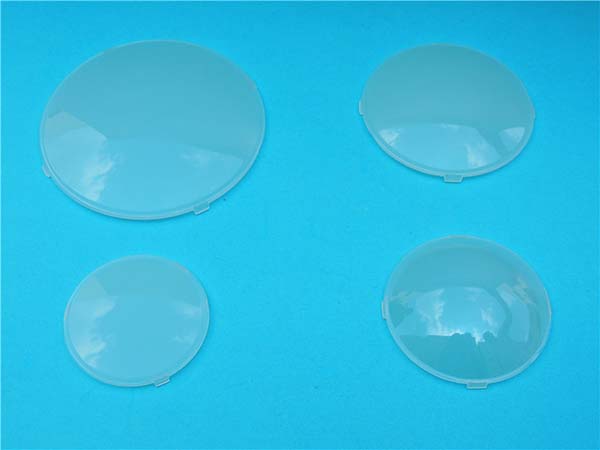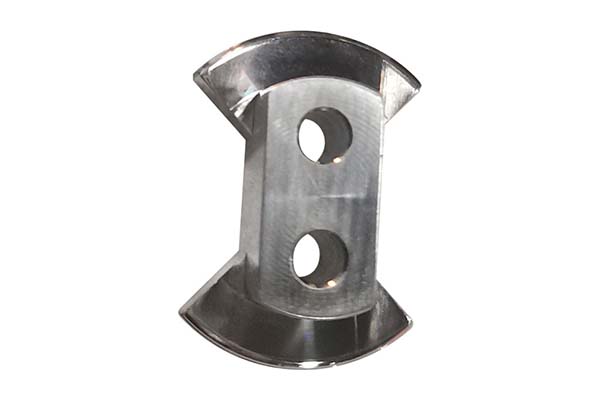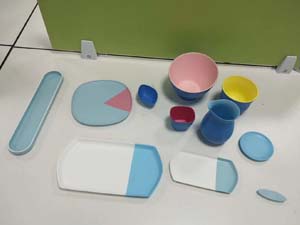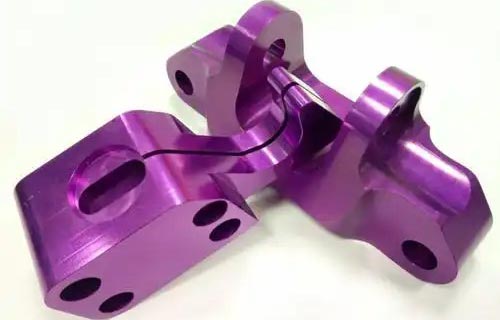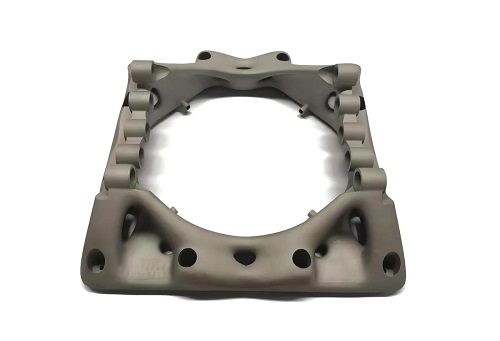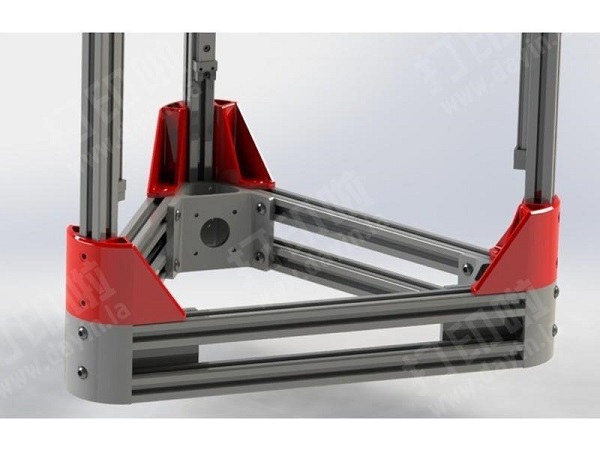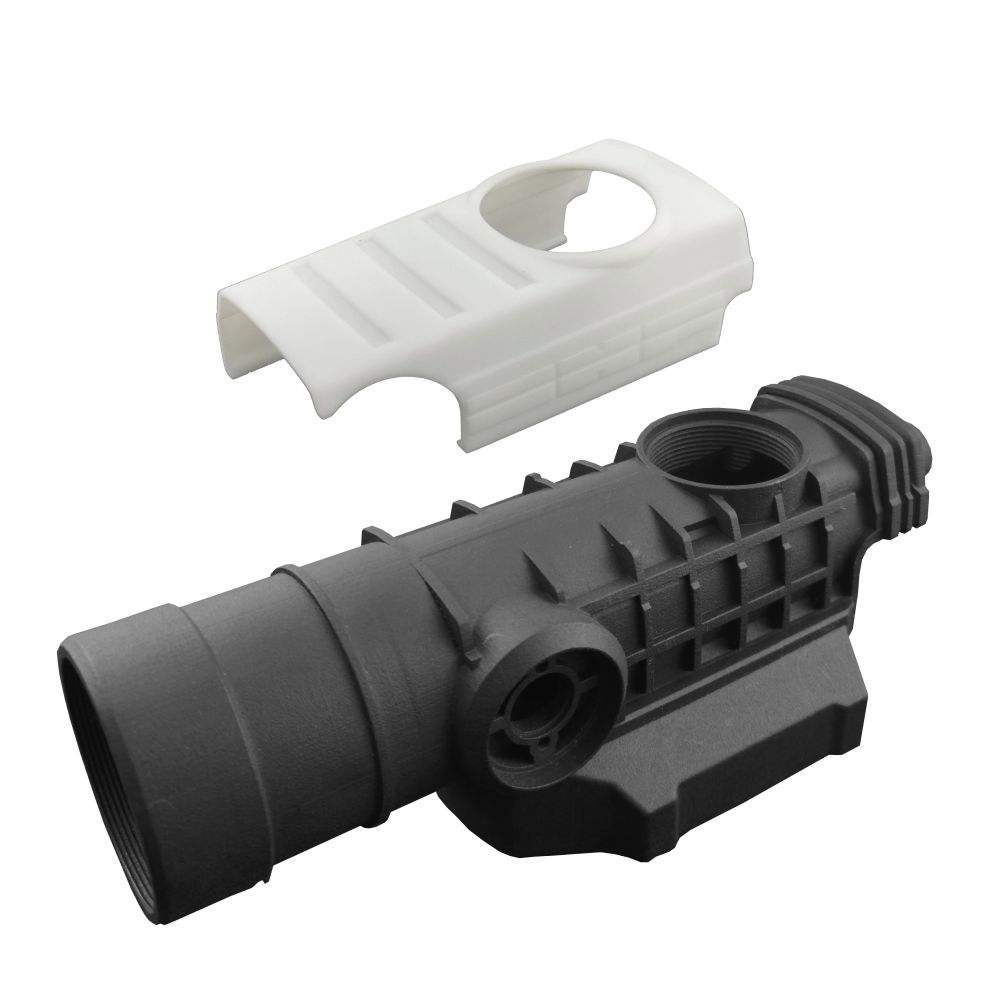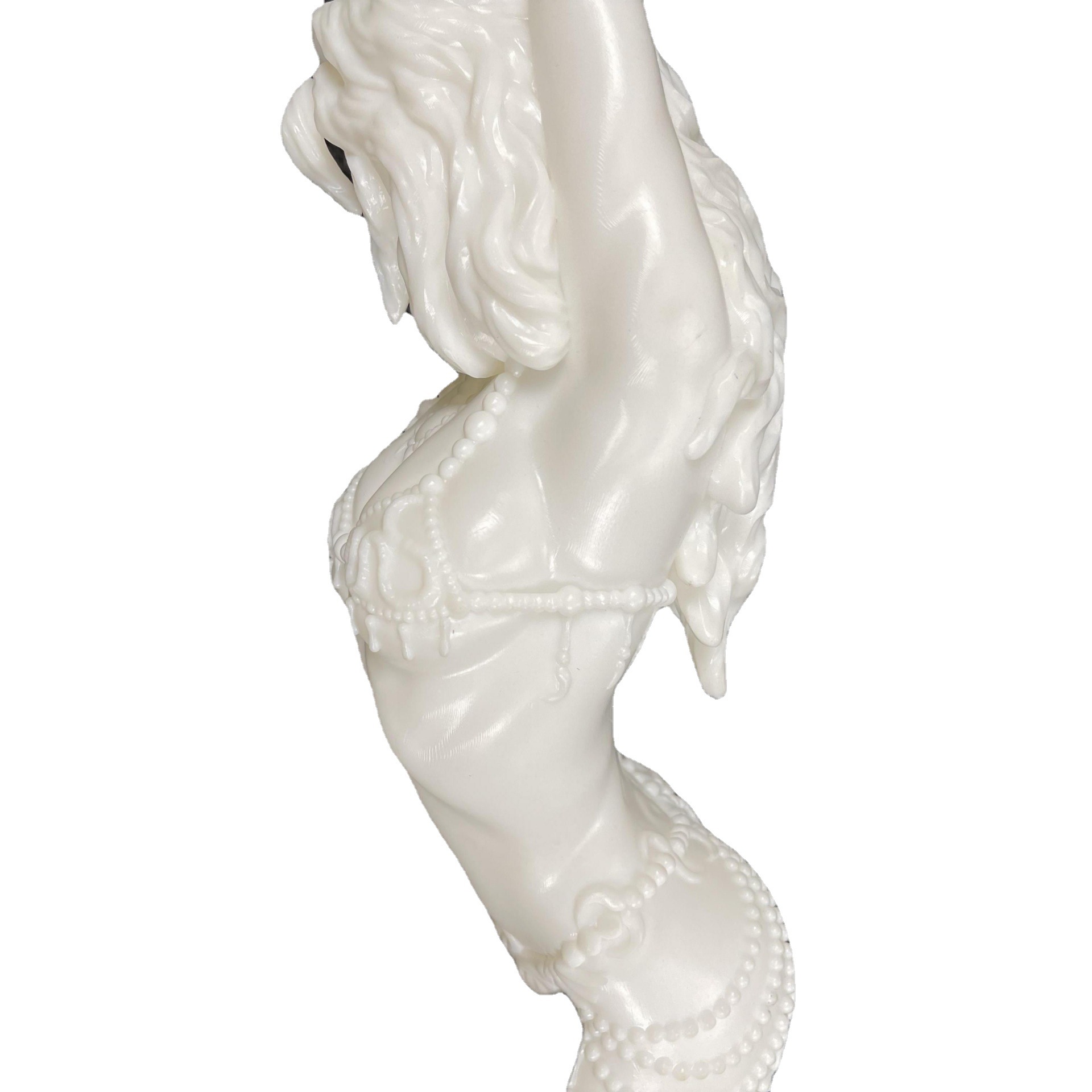1. Introduction
1.1 Definition of 3D Printing in Liquid
3D printing, also known as additive manufacturing, has revolutionized the manufacturing industry by creating three - dimensional objects from a digital model through layer - by - layer material deposition. Among the various 3D printing techniques, 3D printing in liquid stands out as a unique and innovative approach.
Unlike traditional 3D printing methods that often use solid materials such as filaments (in Fused Deposition Modeling - FDM) or powders (in Selective Laser Sintering - SLS), 3D printing in liquid uses liquid - based materials. In this process, liquid resins or other fluid - like substances are transformed into solid structures. For example, in Stereolithography (SLA), one of the most common liquid - based 3D printing technologies, a liquid photopolymer resin is cured layer by layer using a UV laser. The laser traces the cross - section of each layer onto the surface of the liquid resin, causing the resin to solidify and bond to the previously printed layer. Another example is the Continuous Liquid Interface Production (CLIP), which is an advanced form of liquid 3D printing. It uses a combination of light and oxygen to continuously grow a 3D object from a pool of resin, greatly speeding up the printing process compared to traditional SLA.
1.2 Significance and the Problem It Solves
3D printing in liquid offers several significant advantages and addresses some long - standing problems in the manufacturing and prototyping fields.
Complex Structure Manufacturing: One of the major challenges in traditional manufacturing is creating complex geometries. Liquid 3D printing can easily handle complex structures. For instance, it can print objects with intricate internal channels, overhangs, and lattice structures without the need for extensive support structures as in some other 3D printing methods. A study by [Research Institution Name] found that when manufacturing a heat exchanger with complex internal channels using liquid 3D printing, the efficiency of heat transfer was increased by 30% compared to traditional manufacturing methods, due to the ability to precisely control the internal structure.
Material Selection and Functionality: Liquid 3D printing allows for a wide range of materials to be used. These materials can have unique properties, such as biocompatibility, flexibility, or high - temperature resistance. In the medical field, biocompatible liquid resins can be 3D - printed into custom - fit implants. A report by [Medical Journal Name] stated that 3D - printed biocompatible implants using liquid materials have a 95% success rate in initial clinical trials, providing a more personalized and effective solution for patients compared to off - the - shelf implants. In the electronics industry, conductive liquid materials can be printed to create circuit components, enabling the development of flexible and wearable electronics.
Cost - effectiveness and Time - saving: For small - batch production and prototyping, liquid 3D printing can be more cost - effective. Since it doesn't require expensive molds or tooling as in traditional manufacturing methods, the setup cost is significantly reduced. Moreover, the printing process can be relatively fast, especially with advanced liquid 3D printing technologies like CLIP. A case study by [Company Name] showed that when prototyping a new consumer product, using liquid 3D printing reduced the prototyping time from weeks to just a few days, accelerating the product development cycle.
2. How 3D Printing in Liquid Works
2.1 Basic Process
The process of 3D printing in liquid generally involves the following key steps:
- Model Design: The first step is to create a 3D digital model of the object to be printed. This can be done using computer - aided design (CAD) software, such as AutoCAD, SolidWorks, or Blender. Designers can create complex geometries from scratch or modify existing models according to specific requirements. For example, when designing a custom - made dental crown, dentists or dental technicians use 3D scanning technology to obtain the patient's tooth structure data and then use CAD software to design a crown that fits perfectly on the tooth.
- Slice Processing: Once the 3D model is ready, it needs to be sliced into thin layers. Specialized slicing software, like Cura for FDM - based printers, but with specific versions for liquid - based printers as well, is used for this purpose. The slicing software analyzes the 3D model and divides it into a series of 2D cross - sectional layers. Each layer represents a thin slice of the final 3D object, and the software generates instructions (usually in the form of G - code) that the 3D printer can understand. These instructions define the movement of the print head, the amount of material to be deposited, and other parameters for each layer. For instance, a layer thickness of 0.1 mm might be set for a high - precision print of a small jewelry piece, while a thicker layer, say 0.2 mm, could be chosen for a larger, less detailed industrial prototype to speed up the printing process.
- Printing Process: In the printing stage, the 3D printer uses the sliced data to build the object layer by layer. For liquid - based 3D printing, the printer typically has a reservoir of liquid material, such as a liquid photopolymer resin in SLA printers. A laser or a light source (in the case of DLP - Digital Light Processing printers) is used to selectively cure the resin according to the shape of each layer. In SLA, a UV laser traces the cross - section of the layer onto the surface of the liquid resin, causing the resin to solidify. In DLP, a digital micromirror device (DMD) projects an image of the layer onto the resin, curing the entire layer at once. As each layer is cured, it adheres to the previously printed layer, gradually building up the 3D object.
- Post - processing: After the printing is complete, the printed object usually requires post - processing. This may include removing any support structures that were printed to hold up overhanging parts during the printing process. Supports are often made of the same or a different soluble material. For example, in some liquid 3D printing systems, water - soluble supports can be easily removed by soaking the printed object in water. The object may also need to be cleaned to remove any uncured resin. This is usually done by rinsing the object in a solvent like isopropyl alcohol. Additionally, post - curing may be necessary to further harden the object. This can be achieved by exposing the object to additional UV light in a post - curing chamber.
2.2 Key Technologies Involved
- Photocuring Technology: Photocuring, also known as photopolymerization, is a fundamental technology in liquid 3D printing. In this process, a liquid photopolymer resin contains photoinitiators. When exposed to ultraviolet (UV) light or other specific wavelengths of light, the photoinitiators are activated. They then initiate a polymerization reaction in the resin, causing the liquid resin to transform into a solid state. In Stereolithography (SLA), a focused UV laser beam is scanned over the surface of the liquid resin, curing the resin in the desired pattern for each layer. Digital Light Processing (DLP) uses a DLP projector to project an image of the entire cross - section of a layer onto the resin, curing the whole layer simultaneously. This technology enables high - precision printing, with layer resolutions as fine as 25 - 50 microns in some advanced DLP printers, making it suitable for applications such as jewelry design, dental prosthetics, and micro - mechanical parts manufacturing.
- Material Jetting Technology: Material jetting is another important technology in liquid 3D printing. In this method, tiny droplets of liquid material are jetted onto the build platform or onto previously deposited layers. The droplets can be made of various materials, including polymers, ceramics, or even metals in some cases. For example, in some high - end 3D printers, piezoelectric print heads are used to eject small droplets of liquid resin. Each droplet is precisely placed according to the design of the 3D model. After deposition, the droplets are usually cured either by UV light (if the material is a photopolymer) or by other means such as heat (for some thermosetting materials). Material jetting allows for multi - material printing, as different types of materials can be jetted from different nozzles. This makes it possible to create objects with varying properties in different parts, such as a flexible rubber - like section combined with a rigid plastic section in a single printed object, which is useful in the production of complex mechanical components or soft robotics parts.
3. Applications of 3D Printing in Liquid
3.1 In the Medical Field
In the medical field, 3D printing in liquid has opened up new horizons. For custom - made medical devices, take dental prosthetics as an example. Liquid - based 3D printing can produce highly accurate dental crowns, bridges, and orthodontic appliances. A study by [Dental Research Institute] found that 3D - printed dental crowns using liquid photopolymer resins had a 98% fit rate with the patient's teeth, compared to 85% for traditional crowns made by casting methods. This high - precision fit reduces the risk of inflammation and improves the patient's chewing efficiency.
In tissue engineering, 3D printing in liquid is used to create tissue - engineering scaffolds. These scaffolds provide a structure for cells to attach, grow, and differentiate. Scientists can print scaffolds with complex 3D architectures using biocompatible liquid materials such as hydrogels. For instance, a research project at [Biomedical Research Center] successfully printed a cartilage - like tissue using a 3D - printed hydrogel scaffold seeded with chondrocytes. After implantation in animal models, the printed tissue showed signs of new cartilage formation, with 70% of the implanted area filled with new cartilage tissue after 12 weeks, offering hope for patients with cartilage damage.
3.2 In the Jewelry Industry
The jewelry industry has also embraced 3D printing in liquid. For complex jewelry designs, 3D printing allows designers to bring their most intricate ideas to life. Jewelry designer Dharmesh Vaghani used liquid - based 3D printing to create the “Bloom” jewelry series. This series features complex geometric structures and delicate 镂空 designs. The liquid 3D printing process enabled the creation of these fine details with a layer thickness as small as 0.05 mm, which would be extremely difficult to achieve with traditional jewelry - making techniques.
In terms of rapid prototyping, liquid 3D printing significantly shortens the time from design to prototype. A jewelry design studio reported that using liquid - based DLP 3D printers, they could create a jewelry prototype in just 2 - 3 hours, compared to the 2 - 3 days it took using traditional wax - carving methods. This speed allows designers to quickly iterate on their designs, get feedback from clients, and bring products to market faster.
3.3 In Other Industries
In the automotive industry, liquid 3D printing can be used to produce customized interior components. For example, luxury car manufacturers can use it to create unique dashboard inserts or personalized gear shifters. A car customization company used liquid 3D printing to produce a set of interior parts made of high - strength, heat - resistant liquid - printed polymers. These parts not only added a unique aesthetic to the vehicle but also reduced the weight by 20% compared to traditional injection - molded parts, improving fuel efficiency.
In the aerospace field, 3D printing in liquid has the potential to manufacture lightweight and complex components. A research project explored the use of liquid 3D - printed ceramic matrix composites for rocket engine nozzles. These printed nozzles could withstand high - temperature environments up to 2000°C, and their complex internal cooling channels, which were easily printed using liquid - based techniques, improved the efficiency of the rocket engine by 15% compared to traditional nozzles.
4. Yigu Technology's View
As a non - standard plastic metal products custom Supplier, Yigu Technology sees great potential in 3D printing in liquid for custom production. This technology allows for the creation of highly customized products with complex geometries that are difficult to achieve through traditional manufacturing methods. For example, in the production of non - standard plastic parts with intricate internal structures, liquid 3D printing can precisely control the material deposition, meeting the specific requirements of different clients.
